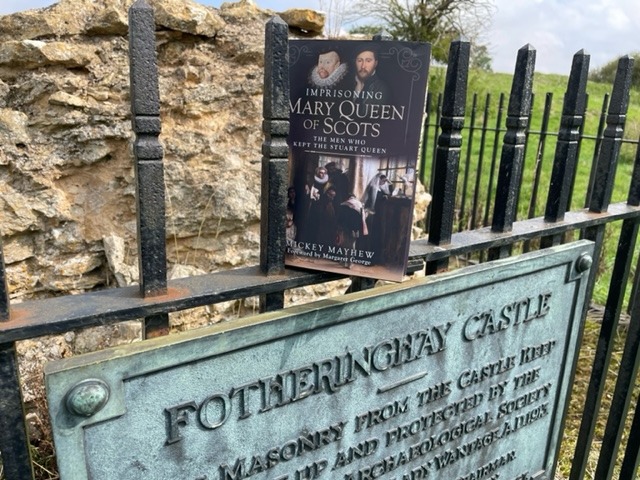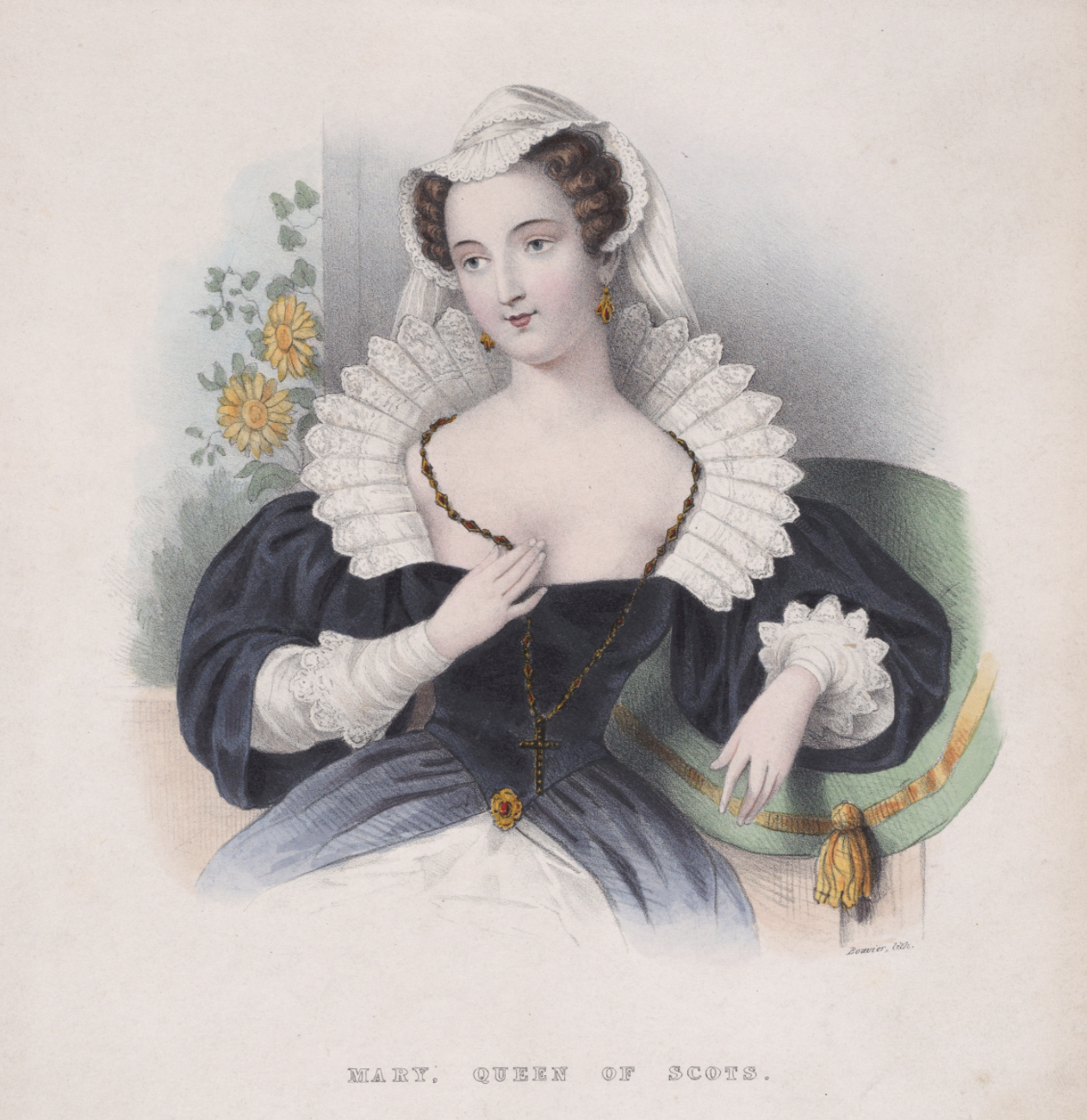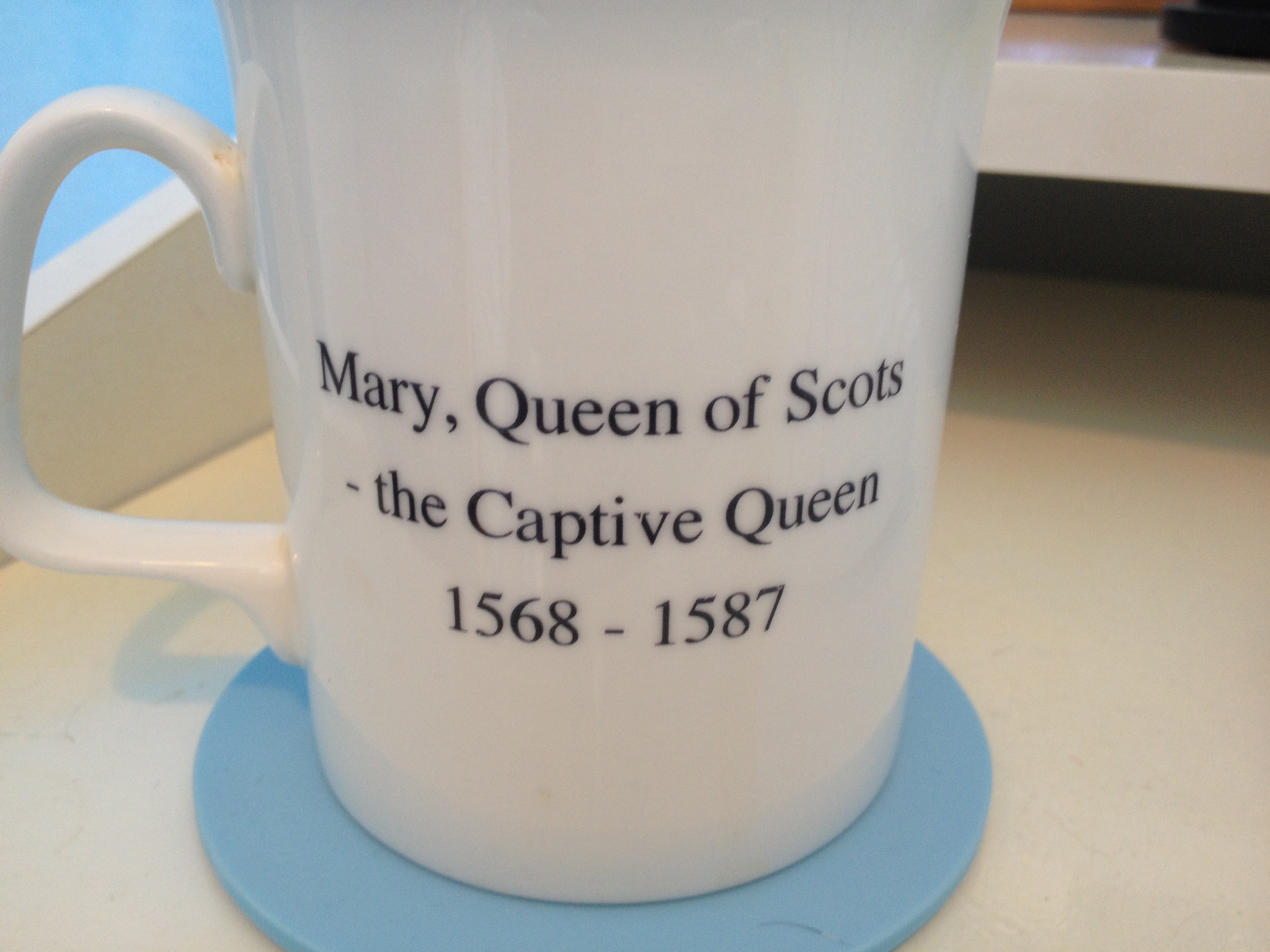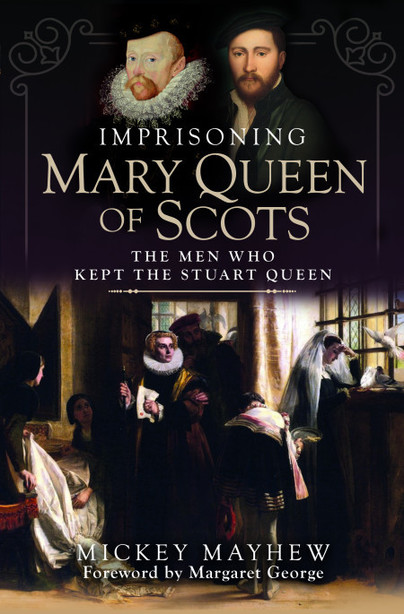Author guest post: Mickey Mayhew
Imprisoning Mary Queen of Scots: Sewing bees, sedition and regicide
The English imprisonment of Mary Queen of Scots, covering some 19 years or so (1568 – 1587) is often glossed over in many biographies in just a few short pages. No one – it would seem – is terribly interested in the self-pitying moping of a deposed monarch who was forced to spend the better part of her life embroidering with Bess of Hardwick and secretly plotting to have England’s queen overthrown. But the tale of Mary Stuart’s time in England is a litany of fascinating – if failed – assassination attempts and leisurely jaunts at some of the top stately homes in the country. When using the word ‘imprisoning’, it naturally conjures up images of lewd and fetid dungeons, but Mary Queen of Scots actually passed those 19 years in the like of Chatsworth House and Buxton, where she took the waters; the much-quoted ‘Draughty castles’ line so favoured by historians doesn’t really hold up to scrutiny. In fact, Elizabeth I was at great pains to keep Mary in much the same style to which she maintained herself, albeit without the freedom, of course. The trouble was, deep down Mary considered Elizabeth a bastard Protestant usurper, even if their correspondence had a tendency to drip with sincerity. As far as Mary was concerned, she was the Queen of England in-waiting and Elizabeth was just keeping the cushion warm for her. So, forget the idea that Mary spent 19 years sewing and sighing, staring out of bared windows whilst turtledoves flocked to her fingertips; she was up to her eyes in escape and assassination plots, from the 1569 ‘Rising of the North’ to 1571’s ‘Ridolfi Plot’, all the way to the Throckmorton, Parry and Babington Plots of the 1580s. In all of these, when found out, Mary would adopt her tried and true ‘Who, me?!’ approach, a surface veneer of innocence that gave just enough time for her ladies in the next room to burn the incriminating correspondence.

Keeping Mary in the style to which she was accustomed was no small feat. To that end, Elizabeth I employed some of the richest men and women in the country to tend to the security of her ‘dear cousin’; most famous among these ‘jailers’ are George Talbot, the Earl of Shrewsbury, and his ‘redoubtable’ wife, Bess of Hardwick. Mary spent the majority of her imprisonment in their charge, almost bankrupting them and most certainly finishing off their marriage in the process. However, the idea that she and Shrewsbury were conducting a clandestine affair is pure rot; had he loved her as much as the various historical novels suggest then he would have had ample opportunity to facilitate her escape; although, having said that, having the object of his affections under his charge would have proved an idea occasion by which to woo her…the evidence is there for all to see, but it is for the reader to make up their own mind in regard to the various dropped hints, sly glances and ‘lapses’ in security which enabled Mary to somehow keep smuggling letters to and fro even after security was supposedly ‘tightened’. Of course, not all of her keepers were quite possibly smitten with her; the stern Puritan Sir Amyas Paulet was – so we are told in the popular narrative – sent to make Mary’s life a living hell; certainly, he conspired in the honeytrap plot that brought her to the block at Fotheringay (or ‘Fotheringhay’) Castle, but my research has revealed that he and Mary actually enjoyed something of a friendship, even when her days were numbered and the both of them knew it. In recent years, Paulet – or his ghost – turned up on ‘Most Haunted’, of all places, where he apparently accosted legendary psychic Derek Acorah; you’ll find details of the afterlife of Mary’s many keepers in a special section at the back of the book, which also details everything from 1936’s ‘Mary of Scotland’ all the way up to 2018’s ‘Mary Queen of Scots’, starring Saoirse Ronan.


‘Imprisoning Mary Queen of Scots – The men who kept the Stuart Queen’ doesn’t off the stereotypical ‘Oh, poor Mary! Woe is Mary!’ picture proffered by countless previous texts. This Mary is in it up to her eyeballs in plotting and foiled passions, smuggling secret messages in beer kegs to and from Burton whilst enticing Phillip II of Spain to release her and lop off Elizabeth Tudor’s head in the process. After all, when you find yourself locked up in a foreign country to which you fled for help, wouldn’t the natural response to be to use all means at your power to affect not only your release but also the downfall of the woman who condemned you to that royal penury in the first place?!
You bet it would.
Mary Queen of Scots – guilty as charged!

……………………………………………………………………………………………………………….

Order your copy of Imprisoning Mary Queen of Scots here.

